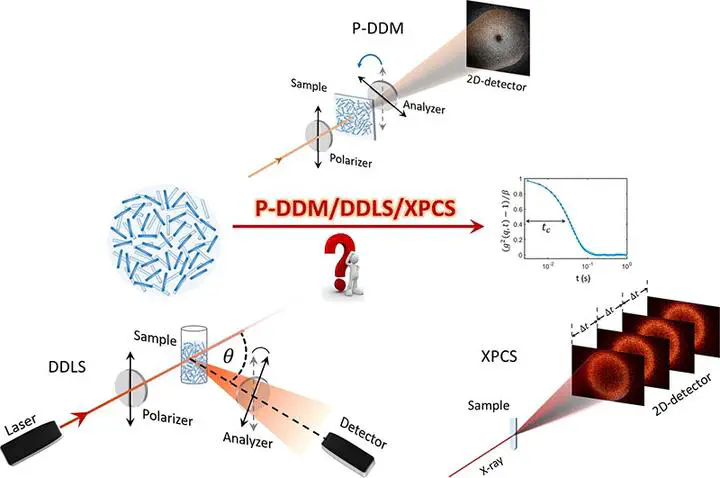 Image credit: Unsplash
Image credit: UnsplashZusammenfassung
Investigation of the dynamics of colloids in bulk can be hindered by issues such as multiple scattering and sample opacity. These challenges are exacerbated when dealing with inorganic materials. In this study, we employed a model system of Akaganeite colloidal rods to assess three leading dynamics measurement techniques: 3D-(depolarized) dynamic light scattering (3D-(D)DLS), polarized-differential dynamic microscopy (P-DDM), and x-ray photon correlation spectroscopy (XPCS). Our analysis revealed that the translational and rotational diffusion coefficients captured by these methods show a remarkable alignment. Additionally, by examining the q-ranges and maximum volume fractions for each approach, we offer insights into the best technique for investigating the dynamics of anisotropic systems at the colloidal scale.
Add the publication’s full text or supplementary notes here. You can use rich formatting such as including code, math, and images.